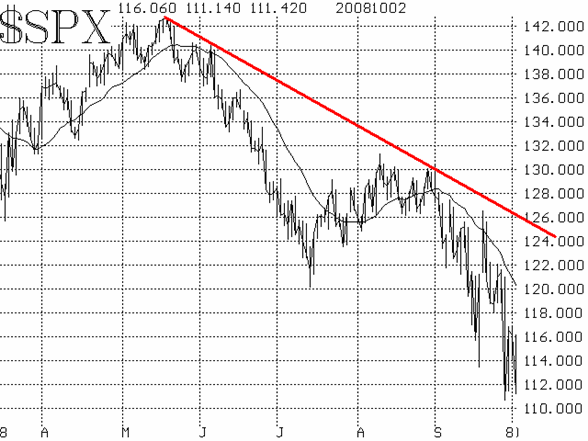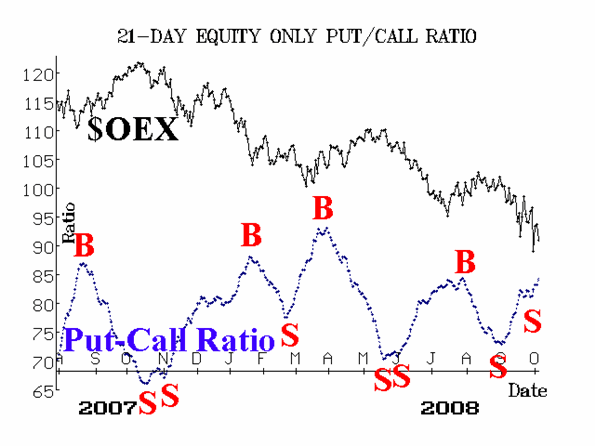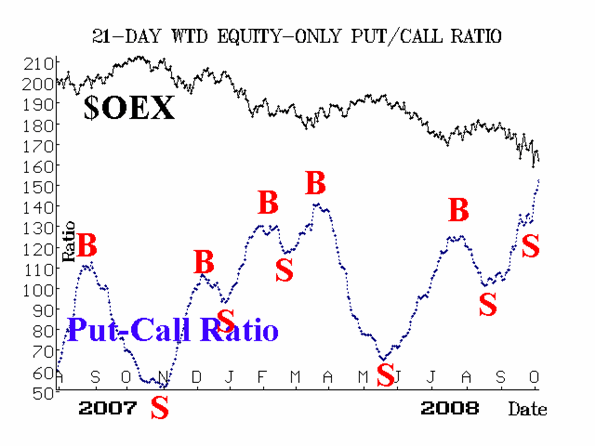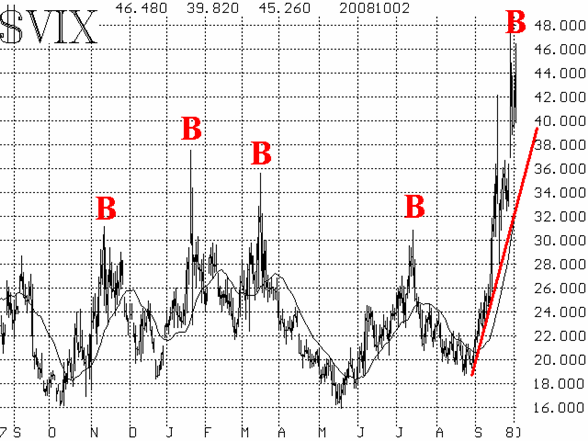| The McMillan Options Strategist Weekly |
| By Lawrence G. McMillan |
Published
10/3/2008
|
Options
|
Unrated
|
|
|
|
The McMillan Options Strategist Weekly
This week's action was extremely bearish, as $SPX has now wiped out all of its gains of the past three years. As a result, the market is heavily oversold, but there are no buy signals in sight. The chart of the S&P 500 Index ($SPX) remains negative. All the major trend lines are sloping downwards, and the 20-day moving average (currently near 1200) is declining. In the short term, the market has been bouncing between 1110 and 1170 since Monday's breakdown; a move outside of that range will probably be significant. The $SPX chart will remain bearish until a pattern of higher lows and higher highs emerges.

The equity-only put-call ratios remain bearish as well. There was some question about a week ago as to whether or not they might be setting up buy signals. But that was resolved in favor of the bears and the ratios are now racing higher on their charts. They are quite oversold, since they are so high on their charts, but they won't generate buy signals until they roll over and begin to trend downward.

Market breadth has been so dismal that intermediate-term buy signals can't form. Until we start to see at least two or three days of positive breadth, these breadth oscillators will remain on sell signals.

The volatility indices ($VIX and $VXO) have exploded upward, as traders are panicking to buy puts on the indices. $VIX spiked up to 48 intraday on Monday. It closed that day at 46.72, the highest close in the history of the "new" $VIX (which started in 1993). The "old" $VIX -- known today as $VXO -- closed above 50 twice this week (54.16 today), which are only the 2nd and 3rd times in history (since 1993) that $VIX has closed that high (the backdated $VIX data, which encompasses the Crash of '87, saw $VIX close substantially higher in that dismal market). These spike peaks in volatility are short-term bullish signals, evidence of an extreme oversold condition. However, the trend of volatility must change in order for intermediate-term buy signals to be generated. That would mean that $VIX needs to close below 37 or so in order to violate the steep uptrend that is in place.

In summary, there are massive oversold conditions. They should be able to generate a sharp, but short-lived rally -- a rally that usually takes place from a mid-day low (not the artificial type of rally last Tuesday after Monday's down day; that rally was completely manufactured and artificial). However, for an intermediate-term rally to take place, true buy signals will be needed. There are none of those at this time.
Lawrence G. McMillan is the author of two best selling books on options, including Options as a Strategic Investment, recognized as essential resources for any serious option trader's library.
|